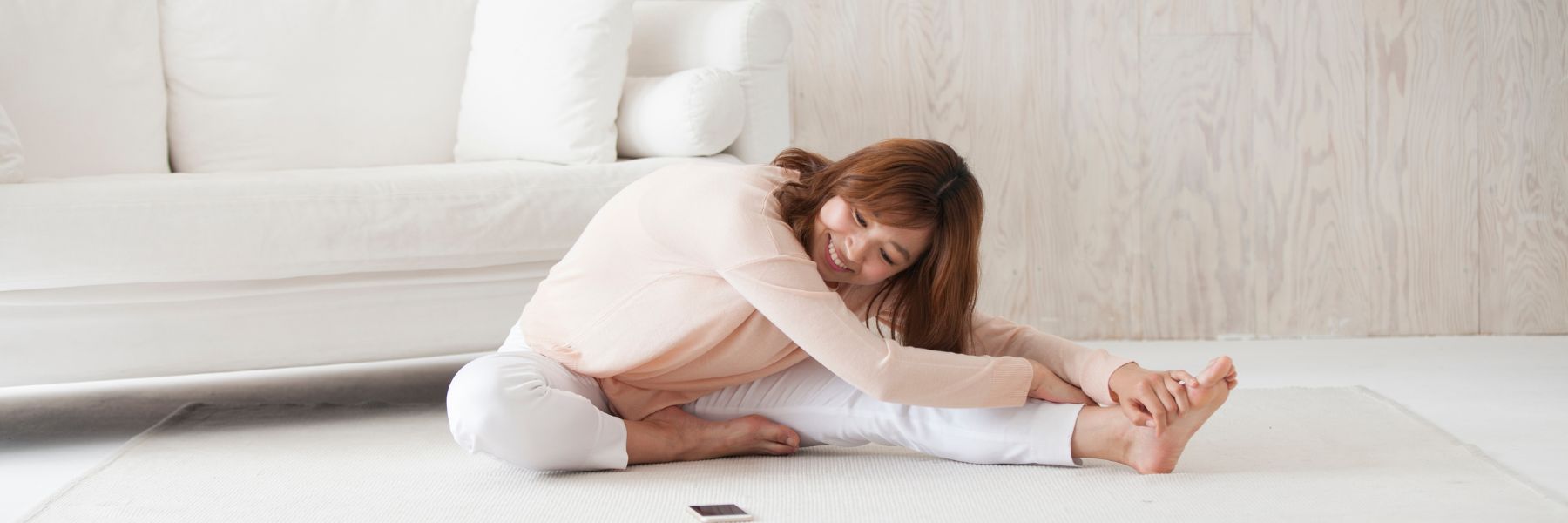

Exercising Safely with Osteoporosis
Osteoporosis is a skeletal disorder in which bones become porous and weak.
Exercising Safely With Osteoporosis
Osteoporosis is a skeletal disorder in which bones become porous and weak. As bones become more fragile, a person’s risk of bone fractures increases. Very often, people in the early stages of osteoporosis don’t experience any symptoms of bone loss—most people do not even know they have it until they suffer a fracture. But as the bones weaken, even a cough or a sneeze may cause a break.

RISK FACTORS
Osteoporosis can happen at any age. And while it is most common in older women, men can have it, too. According to the International Osteoporosis Foundation, there are some common risk factors that can be changed and others which cannot.
Risk factors which cannot be changed:
- Age: The older you are, the greater your chance of osteoporosis.
- Gender: Women are more likely to develop osteoporosis than men.
- Genetics: Osteoporosis tends to run in families.
- Previous fracture: You’re at a greater risk if you have a history of broken bones.
- Menopause/hysterectomy: Menopause is marked by a drop in estrogen, which is a hormone that protects bones. When estrogen levels decrease, bones may lose density and become prone to breaks.
- Medications: Certain medications, particularly steroids, can weaken your bones
Risk factors you can change
- Alcohol: Heavy alcohol consumption inhibits normal bone formation by impacting your body's calcium supply.
- Smoking: Smoking puts you at a greater risk for developing the disorder.
- Low body mass index: Being underweight with a BMI below 19 is a significant risk factor.
- Diet: It's important to eat a diet rich in calcium, protein, fruits and veggies.
- Vitamin D deficiency
- Eating disorders
- Being inactive: A sedentary lifestyle increases your chance of osteoporosis.
- Low Calcium intake: Calcium is so important for bone health.
- Frequent falls
The good news is, you can help keep your bones strong and possibly even prevent osteoporosis with proper nutrition and regular exercise! Building strong bones during childhood and the teen years is important to help prevent osteoporosis, but there are steps you can take now to slow natural bone loss and prevent your bones from becoming weaker and more brittle.
PROTECT YOUR BONES
According to the National Osteoporosis Foundation, adults should do the following to protect their bones:
- Get enough calcium and vitamin D, and eat a well-balanced diet.
- Engage in regular exercise.
- Eat foods that are good for bone health, such as fruits and vegetables.
- Avoid smoking and limit alcohol.¹
EXERCISE AND OSTEOPOROSIS
If you have osteoporosis, you might mistakenly think exercise will lead to fracture. In fact, though, using your muscles helps protect your bones. (Mayo Clinic)²
This is exciting news! To help you determine the types of exercises and movements that are safest for you—and which ones to avoid—it’s essential to talk with your doctor. If osteoporosis is suspected, exercises in which you bend forward may increase your chance of breaking a bone in your spine. Together, you and your doctor can assemble an exercise plan to safeguard your bones and improve your overall well-being.
Pietra Fitness classes can help you improve your strength, balance, and flexibility, and promote good bone health, and most exercises can be modified. But, because there are different stages of severity of osteoporosis, only someone’s doctor or physical therapist can know the best restrictions for their patient. Here is a list of some general guidelines for those who have osteoporosis, but again, check with your doctor before starting any exercise program to know what is best for you.
- Focus on slow, controlled movements to decrease your risk of falling and to keep proper alignment. Alignment comes first in all movements!
- Try to keep your spine as long as possible throughout exercise and while transitioning from one movement to the next. Lengthening the spine creates space between the vertebrae, which can help prevent or correct the collapse of the spine that happens with poor posture.
- Osteoporosis weakens the bones and joints, so jumping or quick dynamic exercises are not recommended. Also, quick changes in direction or position are not recommended.
- Exercises that require spinal flexion (rounded-back) should be avoided because it puts stress on your lower back. This means staying away from forward folds, even gentle ones. It also includes toe touches, crunches, sit-ups, and lying on your back hugging your knees into your chest. This seems to include most exercises that strengthen the core. While core strength is important to support your low back, these exercises require loaded lumbar flexion. This places too high a demand on the lower back, which may lead to fractures. Instead, you can work on core stability while the spine is in a neutral position (lengthened and long) by gently drawing your abdomen in and up on an exhale and relaxing the muscles on an inhale.
- Incorporate weight-bearing exercises if you have been given clearance by your doctor to do so.
- Practice gentle and mild side bends, backbends (if you have kyphosis, check with your doctor), hip stretches, and twists if given clearance by your doctor. Only go as far as you can without sacrificing spinal length.
- When working on balance or standing exercises, have a wall or chair handy to prevent falling.
Your body is a temple of the Holy Spirit (1 Corinthians 6:19), and your bones are the foundation for your temple. Caring for your bones is caring for your temple—and results in fewer aches and pains, slower bone loss, rebuilding of bones, and feeling strong and capable.
The content and information in this article is provided for general informational purposes only and is not medical advice. Please see a physician or health professional if you suspect you have osteoporosis.
¹Osteoporosis Prevention, National Osteoporosis Foundation,https://www.nof.org/preventing-fractures/prevention/
²Exercising with osteoporosis: Stay active the safe way, https://www.mayoclinic.org/diseases-conditions/osteoporosis/in-depth/osteoporosis/art-20044989



